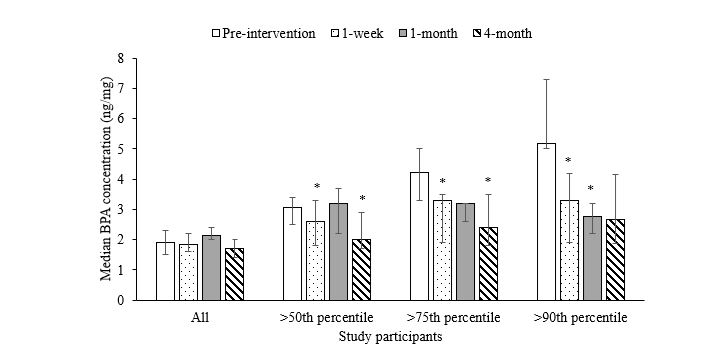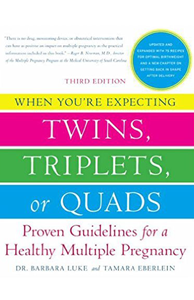Kudos to the American Academy of Pediatrics (AAP) who released a statement and a scientific report on Monday calling for stronger food safety requirements to protect children. The statement which was published in the Journal of Pediatrics cites a growing body of research describing the effect these food additives can have on children’s growth, metabolism, development and obesity risk. The AAP has called on the Food and Drug Administration (FDA) to perform more rigorous testing and greater regulation of the thousands of chemicals used either directly as food additives or indirectly when they leach into foods from plastics and other chemicals used in manufacturing or packaging.
The report is based on decades of both animal and human research documenting the effects of these chemicals and food additives on human health. Many consider it long-overdue. The Endocrine Society has long recognized these chemicals as potential endocrine disrupting compounds (EDCs) because of their chemical similarity to steroid hormones such as estrogen, testosterone, thyroid hormone and corticosteroids. These EDCs have the ability to mimic or block hormonal activity by binding to their cellular receptors and modifying their endocrine message. Alterations of the hormonal signal and the resultant modification of genetic expression at early life-stages can have long-tern affects on growth and development.
While there are literally thousands of food additives and other chemicals with endocrine disrupting effects, the AAP report targets several to which we have the greatest exposure and the most available research.
–Bisphenols: such as BPA and BPS, which are used to harden plastics and are a critical component of epoxy resins that line metal cans. Bisphenols are one of the highest-volume chemicals produced worldwide and are routinely used in common consumer products such as food and beverage containers, dental sealants and thermal printed receipts. In 2003-04, a national survey (NHANES) detected BPA in 92.6% of all participants confirming the widespread exposure of U.S. citizens to this ubiquitous chemical. BPA binds to plasma membrane and nuclear estrogen receptors and has feminizing effects on males in animal models.
–Phthalates: are chemicals used to soften plastics and make them more flexible for products like medical tubing, flooring, paints and food packaging. Phthalates are also extensively used in cosmetics and many other personal care products. An earlier NHANES survey found detectable levels of at least 4 phthalate metabolites in >75% of the general population and >99% of pregnant women. Most phthalates have anti-androgenic effects resulting in abnormal sexual development in male rodents and humans with greater exposure. A sentinel study by Shanna Swan and colleagues in 2005 demonstrated measurable differences on penile size and ano-genital distance in newborn boys associated with greater phthalate exposure- evidence of impaired masculinization.
–Perfluoroalkyls (PFCs): are used in grease-proof paper and cardboard food packaging. These PFCs are both endocrine disrupting agents as well as obesogenic.
–Perchlorate: which is added to some dry food packaging to control static electricity. These have actions on both estrogen and neurotransmitter receptors resulting in neuroendocrine and behavioral changes in animal models.
–Nitrates/Nitrites: used to preserve food and enhance color, especially in processed meats. Nitrates and nitrites have been implicated as carcinogenic.
–Artificial Food Colors: according to the studies cited in the AAP report, the color additives may be associated with the current epidemic of attention deficit-hyperactivity disorder (ADHD) as well as worsening its symptoms.
The AAP report emphasizes that children are particularly vulnerable to the EDCs and other additives in food because they eat more food per pound of body weight compared to adults and because children’s metabolic systems are still maturing making them more susceptible to hormonal disruption. As an Obstetrician, I will extend that concern to the prenatal period. My friend, and brilliant Reproductive-Biologist, Louis J Gillette, Jr, PhD, co-authored a sentinel paper in Fertility and Sterility in 2008 outlining the links between fetal exposure to specific EDCs and disorders of women’s health such as premature menarche, early breast development, uterine fibroids, endometriosis, and breast cancer among others. He and his co-authors, most importantly, pointed out that even low -level exposures to these EDCs could be problematic if they occurred at critical points during fetal development.
Diethylstilbestrol (DES) is the poster child for the adverse consequences that these endocrine disrupting compounds can cause in utero. DES is a synthetic estrogen that was marketed and used extensively between 1940 and 1971 purportedly to prevent miscarriage, preterm labor and related complications of pregnancy. This synthetic estrogen had a dramatic effect on the development of the reproductive system in the female fetuses being carried. DES daughters were found to have high incidences of infertility, miscarriage, pre-viable and preterm birth due to structural abnormalities of the fallopian tube, uterus and cervix.
DES was finally taken off the market in the early 1970s after reports of a rare vaginal clear cell adenocarcinoma in DES daughters. These rare cancers of adulthood were being diagnosed in adolescent girls at a frequency that were thousands of times more likely than would be expected in the general population. The key link was to their mother’s DES exposure. Life-long reproductive effects due to fetal exposure to a synthetic estrogen that disturbed the normal development and functioning of the reproductive system. It is important to note that all the adverse effects of DES, up to and including vaginal malignancies, were predicted by the mouse and other animal models long before the adverse effects were noted in post-pubertal girls. The entire DES tragedy could have been prevented by careful testing of DES effects on pregnant animals prior to releasing the drug onto the market.
The AAP is particularly critical of the F.D.A.’s regulatory efforts in protecting us from these chemicals and food additives. Both the F.D.A. and the E.P.A. rely too heavily on classic toxicology studies where animals are exposed to increasing concentrations of a chemical and investigators look for increasing adverse effects associated with increased dosing. This approach overlooks the fact that even low level exposures can have adverse consequences in utero if the fetus is exposed at a critical developmental time-point. The F.D.A. also designates too many chemicals and food additives as “generally recognized as safe” if they have any similarity to other chemicals already in commercial use.
The general response to the AAP report is the same as it has always been. There are thousands of chemicals. Testing all of them would be an impossible task. And, of course, the old reliable, that “the research to date is not definitive and more study is needed” on most of these chemicals. Well, okay. Let’s just do those studies before we expose our children- both born and unborn. As it stands now, the governments own self-assessment in the context of a 2010 Government Accounting Office report stated “the F.D.A. is not able to ensure the safety of existing or new additives through this approval mechanism.”
So, other than social activism to pressure politicians and regulators to address the recommendations of this report and demand that more money be invested to ensure the F.D.A. performs the job they were created to do, is there any thing you can do? There is actually a great deal that you can do as an individual to protect yourself. The AAP statement makes multiple self-empowering recommendations including:
-Consume fresh or frozen fruits and vegetables instead of canned
-Clean all fruits and vegetables that cannot be peeled
-Avoid processed meats, especially during pregnancy
-Avoid microwaving food or beverages (including infant formula and pumped breast milk) in plastic containers and don’t put plastic food containers in the dishwasher
-Use alternatives to plastic, like glass, wooden bowls or stainless steel, whenever possible
-Wash your hands before and after handling food and drinks
-Check the recycling code on the bottom of products and avaoid plastics with recycling codes “3” (phthalates), “6” (styrene) or “7” (bisphenols), unless they are labeled “biobased” or “greenware” which indicated they are made from corn and do not contain bisphenols.
These are all more than “feel-good” recommendations. They can have a significant impact on exposure to these chemicals. In one “fresh foods” intervention (Rudel et al, 2011) the investigators prepared meals for study participants from fresh organic foods without the use of plastic utensils or non-stick coated cookware. Prepared food was stored in glass containers and participants received stainless steel water bottles. After 3 days of the fresh foods intervention, urinary BPA concentrations fell by 66% and specific phthalates fell by 56%. In another study (Carwile et al, 2011), one group received a single 12-oz daily serving of vegetable soup prepared with fresh vegetables for 5 days while the other group consumed a daily 12-oz serving of a commercially available canned vegetable soup on the same schedule. After a 2 week wash-out, treatment assignments were reversed. After consuming the canned soup for 5 days, the BPA levels rose 1,221%
Those interventions were both performed in a very controlled environment. A more practical question is what could be achieved with an intervention based solely on education. Among approximately 50 research volunteers we evaluated the effectiveness of a PowerPoint presentation and an educational hand-out directed at reducing BPA exposure. We collected urine samples for BPA concentrations pre-intervention and at 1-week, 1-month and 4-months post-educational intervention. The intervention was successful as illustrated in the Figure above. We reduced BPA exposure for those subjects whose baseline BPA level were > 50th, >75th and, most significantly, >90th percentile. More importantly, our educational effort persisted for at least 4 months post-intervention. The adoption of the above AAP recommendations will significantly reduce any excessive individual exposure to BPA, phthalates, PFCs and other potentially harmful food borne chemicals and food additives regardless of government or F.D.A. response, or lack thereof.
I am about as far from being a fanatic about anything (except college basketball) as anyone I know. As I get older, I’m reminded each day that I should have treated my body better. “Better safe than sorry” is always a very difficult lesson. I urge to to consider that lesson as regards to food additives for the sake of yourself, your children and your unborn babies.Social activism begins at home and then spreads to the county council, statehouse and then Congress.
My biggest challenge with this blog is selecting the best Bruce Springsteen video to accompany. Bruce doesn’t have very many songs about food additives, but tradition is tradition. After a bit of reflection I settled on “Racing in the Street” from the Darkness on the Edge of Town album. Why is the question. First, it’s on anybody’s top ten list of Springsteen songs and, personally, it’s on my revolving top 5 list. Even if you have no interest in EDCs or food additives, this video is a treat worth investing 10 minutes of your life. Please watch it.
The depth of emotion contained in “Racing in the Street” can be overwhelming. Roy Bittan at the piano sets the tone from the very first note and then Springsteen begins to sing with a voice full of reminiscence, regret and resignation. From there, the song builds magnificently, initially just the piano and the vocals in the first verse and chorus, then each member of the E Street Band joins in, one at a time, raising the emotional tension. Mighty Max Weinberg rhythmically slapping his drumstick against the edge of his snare, Danny Federici’s organ joining in with Roy Bittan’s piano, Garry Tallent adding the bass, Miami Steve providing soft guitar work and Max switching back to the skins. Finally the song cycles back to a stripped down final verse just before Roy Bittan steps in to add a brilliant, deeply expressive piano solo carrying the song to its majestic conclusion.
As you can tell from the video, it is one of Bruce’s great encore numbers. Almost always played as the band and the audience are at the peak of physical and emotional exhaustion. It was a encore at the Guillard Auditorium show in November of 1978 and , as it always does, it reminds you that at the end of the day, the person standing next to you is almost all you really have, and that you better hold on to them with all you have.
Lastly, and the other reason I selected “Racing” for this blog, is my favorite line, “Tonight my baby and me, we’re going to ride to the sea and wash these sins from my hands.” A powerful endorsement of the potential benefit of hand washing!
Dr. Newman is a Professor and Maas Endowed Chair in Obstetrics, Gynecology and Reproductive Sciences at the Medical University of South Carolina and has done research on BPA, phthalates and other EDCs. However, these opinions are his alone and do not necessarily represent those of the Medical University of South Carolina.








Interesting article. Really enjoyed the Bruce Springsteen song!
Well written and well reasoned. If i may add. If we tax all these substances and the generated funds are to be used exclusively for educating parents and kids about these additives, we may achieve what was achieved in reducing tobacco usage.
Mike, thanks for the comment. Smart as always. Wish I’d included it in my blog. Getting ready to write another one on the new ARRIVE study. Any thoughts? BTW- my new book What Becomes was just released. On Amazon, Barnes and Nobel and Kindle. Best one yet if I say so myself. Hope you enjoy it……………….roger